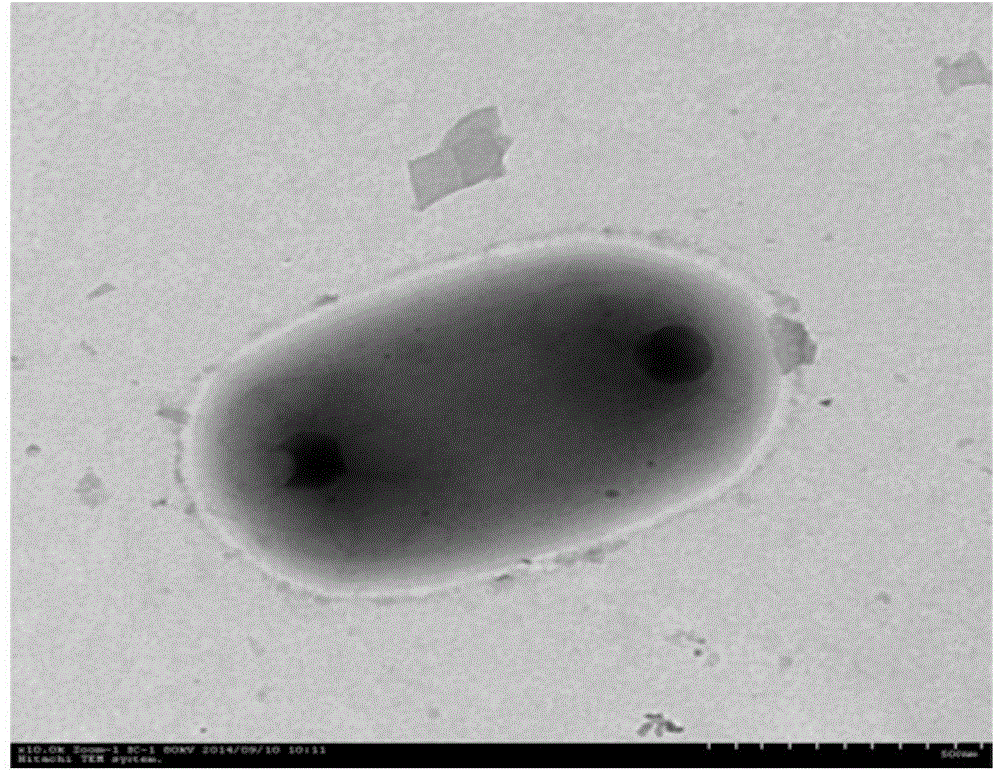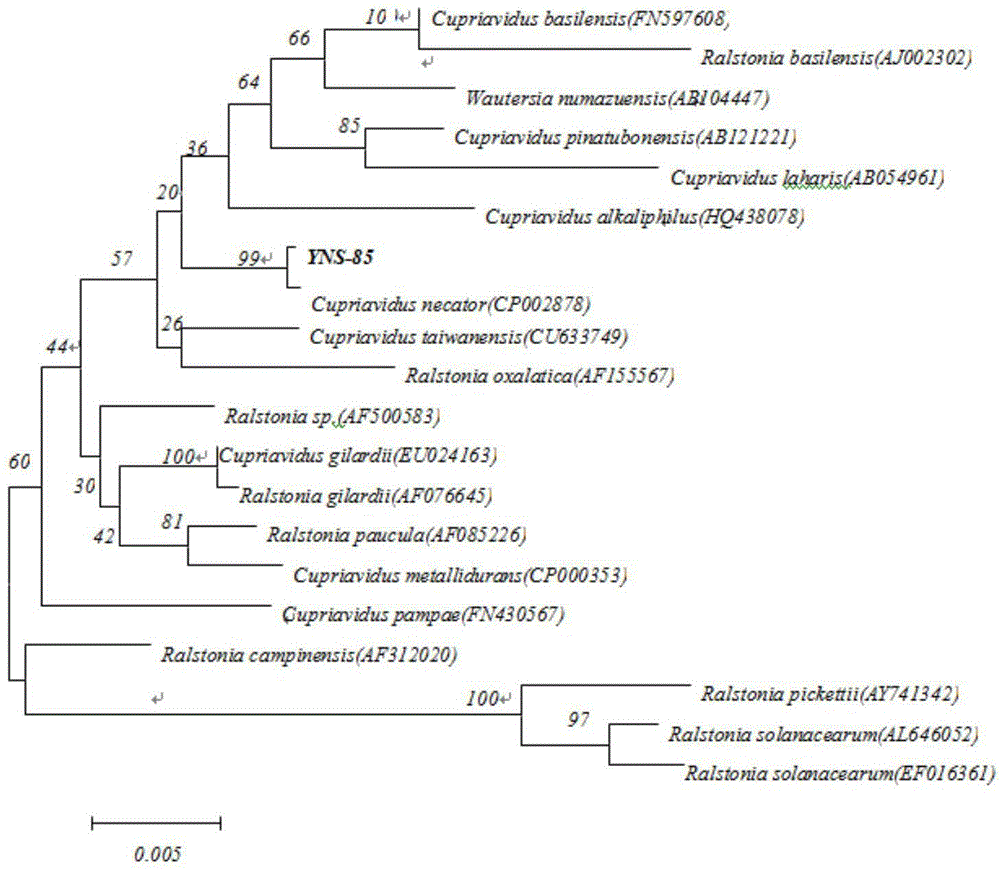Cupriavidus sp. YNS-85 and its application in soil restoration
A technology of YNS-85 and copper-loving bacteria, applied in the field of environmental microorganisms, can solve the problems of non-degradation, excessive pesticide residues, and low bacterial resources.
- Summary
- Abstract
- Description
- Claims
- Application Information
AI Technical Summary
Problems solved by technology
Method used
Image
Examples
Embodiment 1
[0017] 1. Materials and methods
[0018] 1.1 Materials and reagents
[0019] The soil tested for bacteria screening was pentachloronitrobenzene-contaminated soil in Wenshan, Yunnan. The standard PCNB was purchased from Beijing Bailingwei Chemical Technology Co., Ltd. Chromatographically pure n-hexane. Anhydrous sodium sulfate (analytical pure) was activated at 400°C for 6h, cooled and stored in a glass desiccator until use.
[0020] 1.2 Culture medium composition
[0021] LB liquid medium: peptone 10.00g, yeast powder 5.00g, sodium chloride 10.00g, add deionized water to 1L, adjust pH to 7.0, solid medium and then add agar at a mass ratio of 1.5%-2.0%.
[0022] Basal salt medium: KH 2 PO 4 1.00g, Na 2 HPO 4 1.2g, NH 4 NO 3 0.50g, MgSO 4 ·7H 2 O 0.20g, FeSO 4 ·7H 2 O 0.005g, trace element solution 10mL, add ultrapure water to 1L. With 2mol / L HNO 3 and 2mol / L NaOH solution to adjust the pH value of the medium to 7.0.
[0023] Trace element solution: Ca(OH) 2...
PUM
| Property | Measurement | Unit |
|---|---|---|
| diameter | aaaaa | aaaaa |
Abstract
Description
Claims
Application Information
 Login to View More
Login to View More - R&D
- Intellectual Property
- Life Sciences
- Materials
- Tech Scout
- Unparalleled Data Quality
- Higher Quality Content
- 60% Fewer Hallucinations
Browse by: Latest US Patents, China's latest patents, Technical Efficacy Thesaurus, Application Domain, Technology Topic, Popular Technical Reports.
© 2025 PatSnap. All rights reserved.Legal|Privacy policy|Modern Slavery Act Transparency Statement|Sitemap|About US| Contact US: help@patsnap.com



